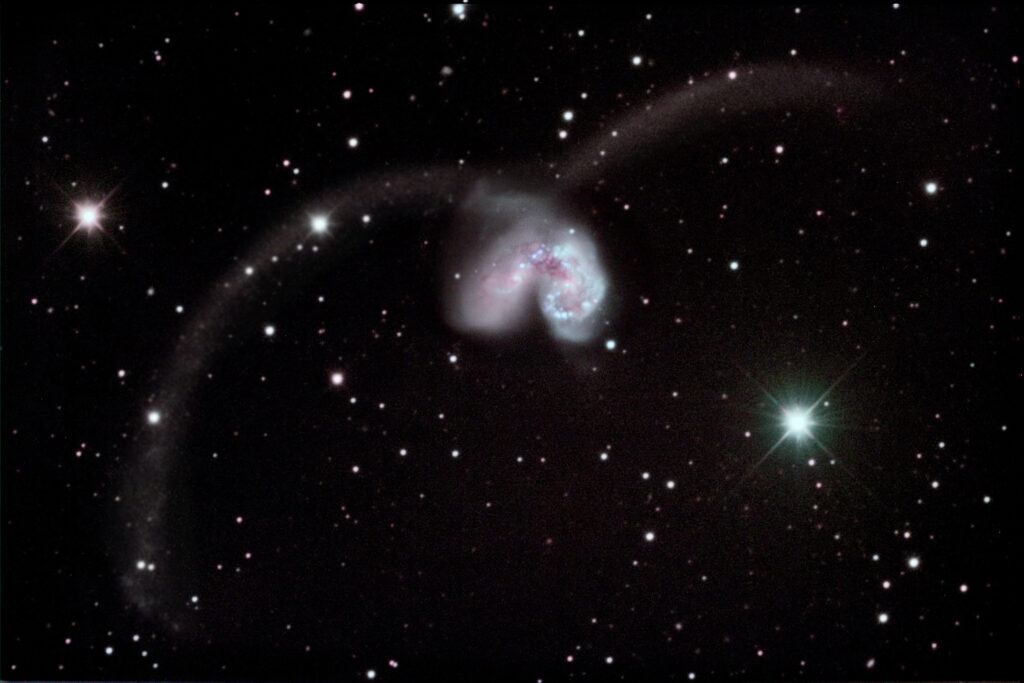Long ago, in the constellation Corvus (Latin for the "raven") two quietly rotating spiral galaxies slowly approached each other. Eventually, the galaxies merged into a death grip that we see depicted in this image. The merger, or collision, compressed vast clouds of hydrogen gas, resulting in prodigious new star formation in what is known as a "starburst" effect. In the distant future, the two galaxies will pass through each other, and embark upon their latter years as separate islands in the intergalactic void.
The two galaxies (designated NGC4038 and NGC4039) are 45 million light years away from Earth, and form a small heart-shaped image in small telescopes. Details emerge with larger instruments. They are popularly called the "antennae galaxies" because of the long trails of stars produced by the pair.
The "Antennae Galaxies"
Date Taken:April 2016
Location Taken:Misti Mountain Observatory, NW Arizona
Conditions of Location: Equipment Used:32"Ritchey-Chretien telescope, SBIG STL11000 CCD camera
Processing Used:Image acquisition by Jim Misti, processing by Richard Hammar using Pixinsight and Photoshop
Distance from Location:45 million light years
Constellation:Corvus (the "raven")
Other Link:
